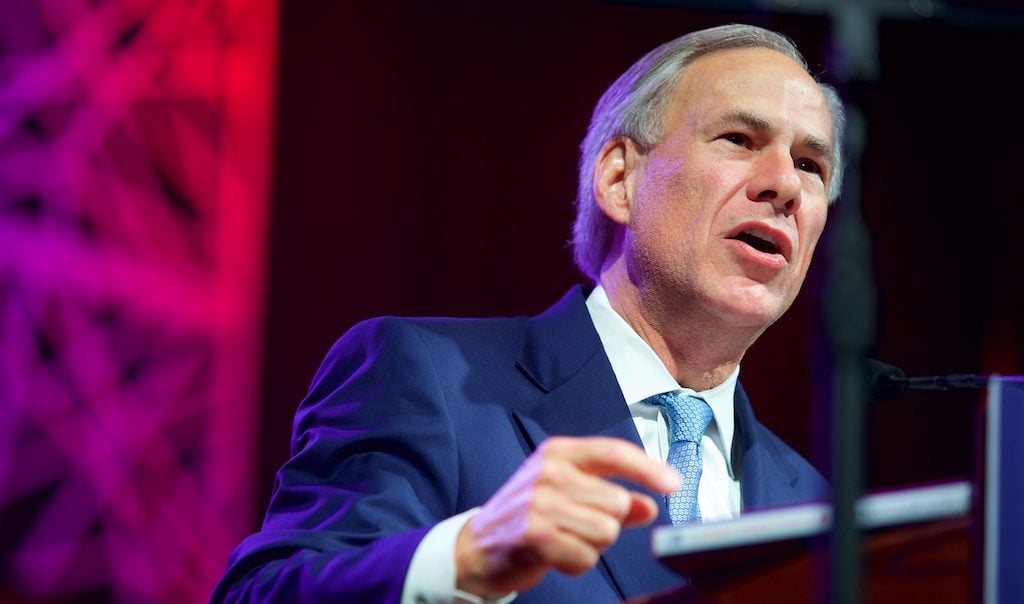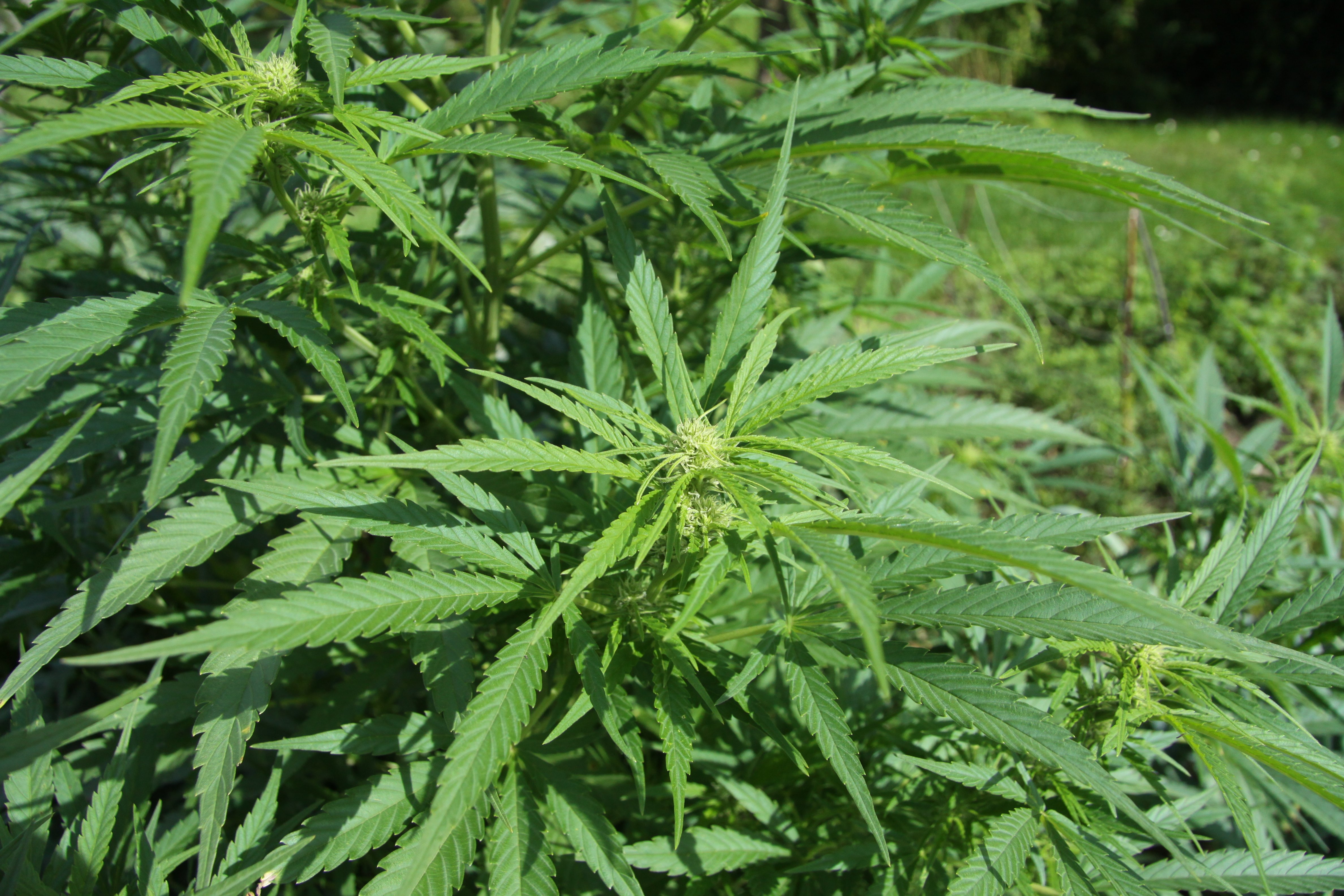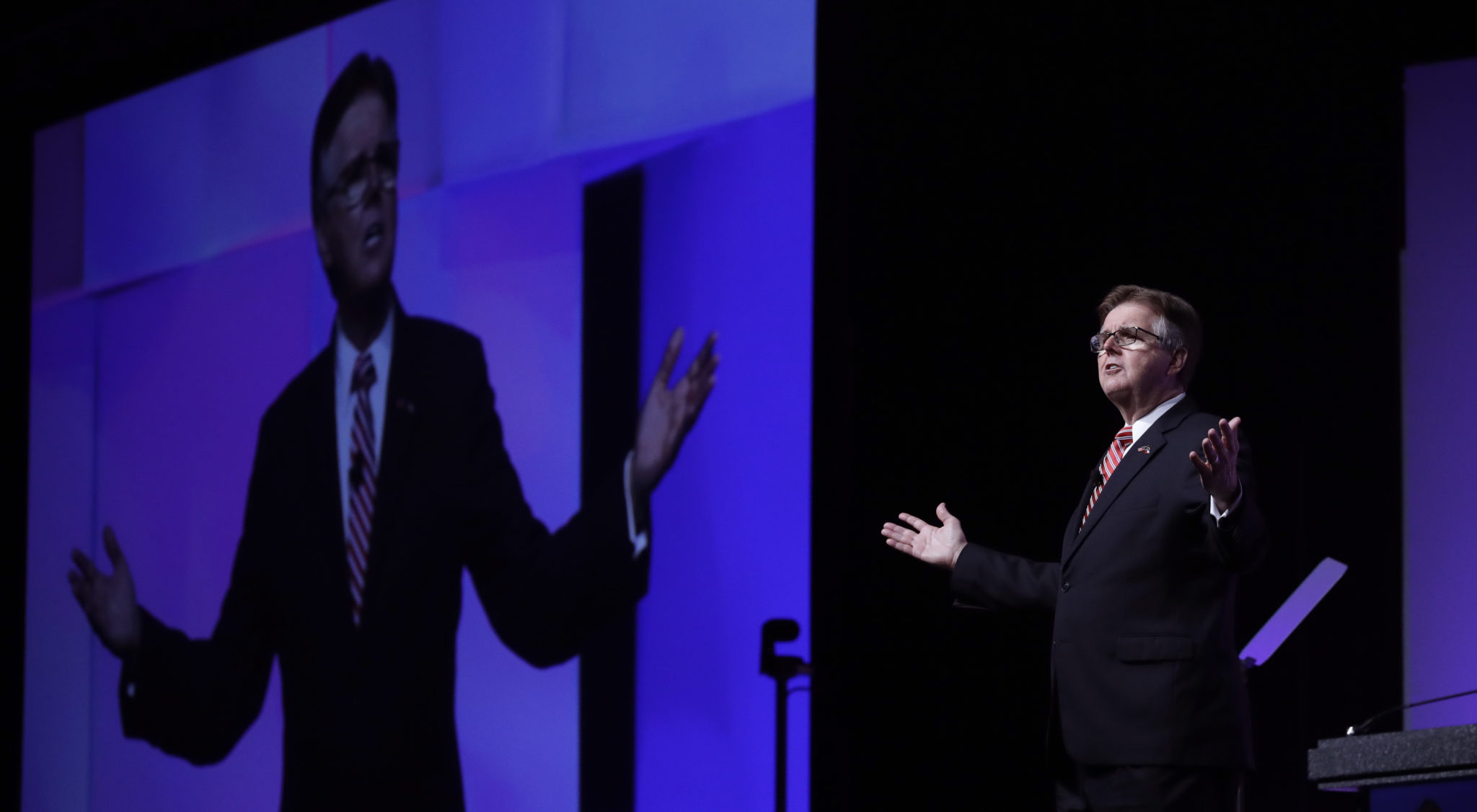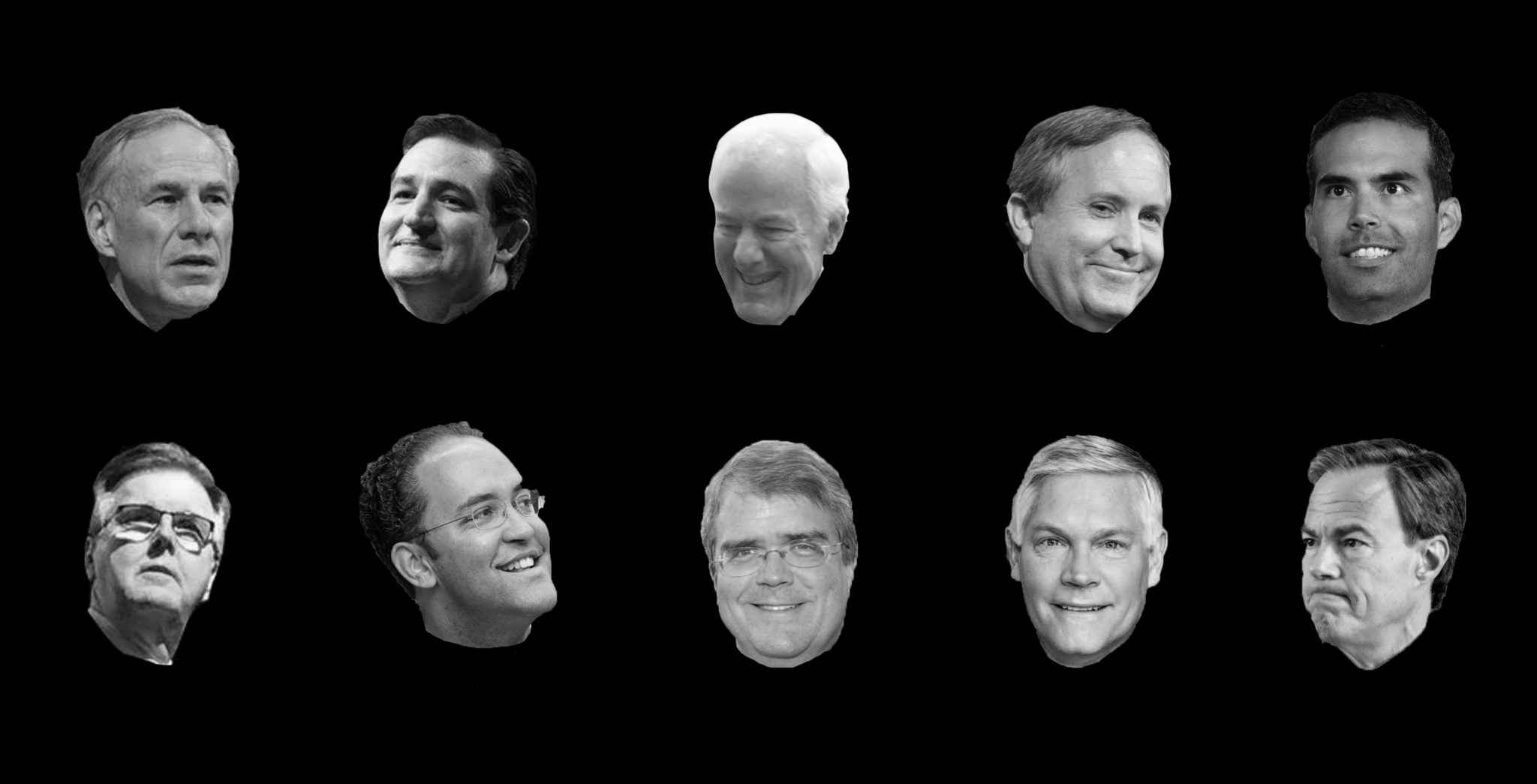
Greg Abbott, Wendy Davis On Track to Spend $100 Million in Guv Race

Above: Attorney General Greg Abbott at a campaign event.
We have just four weeks before Election Day, and realities are clicking into place. Monday was the last day new voters could register. And Tuesday served as one of the last checkpoints in the money race, as 30-day financial reports were released online.
The reports, which track fundraising and spending from July 1 to Sept. 25, show more similarities with the last round of reports than differences. In the marquee governor’s race, Greg Abbott continues to hold on to a massive war chest—he has more than $30.1 million in cash on hand, even though he’s spent more than $17.6 million and raised only $7.8 million in the last three months. It’s a superhuman sum. His report spans some 2,706 pages.
Davis’ finances are more complicated, in part because the campaign’s effort is split into three groups—but the campaign reports some $5.7 million in cash on hand split across four committees. That’s a little more than a fifth of Abbott’s sum. In spending, though, Davis has been keeping better pace with Abbott.
The campaign itself reports $6.8 million in contributions, plus another $1 million in in-kind donations, similar figures to Abbott’s haul. Battleground Texas, the campaign’s field arm, took in a little over $2.6 million, while spending $2.9 million. Battleground has only $473,000 remaining as of Sept. 25. Davis has never been able to compete with Abbott on a purely financial level, and the gap would seem to be growing. At the same time, as the race nears the finish line, opportunities for Abbott to spend that money diminish.
Together, it’s likely that Davis and Abbott will collectively raise more than $100 million this election. That’s a staggering sum, but it’s still likely to fall short of the $125 million raised and spent by Democrat Tony Sanchez and Rick Perry in 2002 but only because Sanchez spent out of his personal fortune.
In the lt. governor’s race, Republican Dan Patrick is better-positioned than Democrat Leticia Van de Putte, but his advantage is much less than Abbott’s. Patrick has $4.3 million in cash on hand compared to Van de Putte’s $2.2 million. He outraised Van de Putte $4.26 million to $3.1 million. But Van de Putte outspent Patrick more than 2-to-1 in the last three months—she spent $1.75 million, while he spent $804,000.
In the attorney general’s race, where Ken Paxton is biding his time till victory against Sam Houston, Paxton has almost 13 times as much money in the bank as Houston does, and raised more than 15 times as much money.
Up in Ft. Worth’s Senate District 10, things are more interesting. Democrat Libby Willis is fighting an uphill battle to save Wendy Davis’ soon-to-be-former seat for the Democratic Party against tea party organizer Konni Burton. This summer, Burton’s fundraising was kind of lackluster, but most people assumed money would pour into her campaign from the usual GOP donors at the last minute.
That hasn’t happened, and Willis has gotten a massive boost from Back to Basics PAC, a campaign finance vehicle heavily underwritten by Houston trial lawyer Steve Mostyn, the state’s biggest Dem donor. On Sept. 12, Back to Basics wrote Willis a $500,000 check—an enormous sum for a legislative race—bringing her contributions for the period to a little under $734,000. She spent just under $331,000, and has almost $475,000 remaining, with $88,000 in outstanding loans.
Burton’s numbers are comparatively anemic. She took in a little over $335,000, spent only $140,000, and has just over $200,000 left—plus $255,000 in outstanding loans. But there’s a strong possibility GOP donors will now race to match Mostyn’s money.
Money’s an important part of these campaigns, but it’s not everything. Battleground is talking up their success at building the Democratic volunteer base: According to its latest statement, 31,000 volunteers “have made 3.9 million phone calls to voters, and reached out to voters at the doors more than 1.2 million times.”
What effect will all that have? We’ll see in a couple weeks. But there’s some reason to think it’s made an impact. As the Houston Chronicle reported yesterday, the number of registered voters in the state’s five most populous counties has increased 2 percent since 2012—though that still doesn’t keep pace with population growth, at 2.6 percent. In majority Latino Bexar County, voter registration numbers is 3.6 percent higher than 2012. In 2010, during the last midterm election, the number of registered voters in the Texas’ five biggest counties actually declined from the previous cycle. Texas being what it is, higher voter registration numbers will almost inevitably help Democrats.
To support journalism like this, donate to the Texas Observer.

